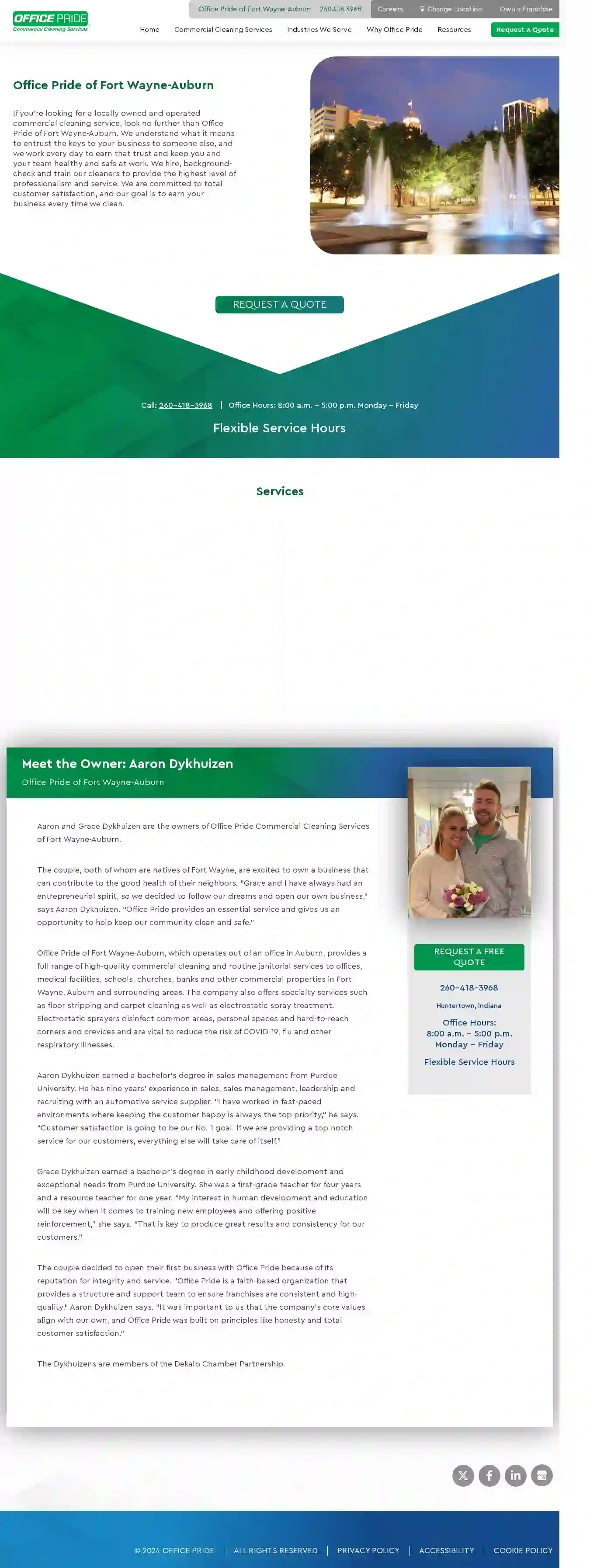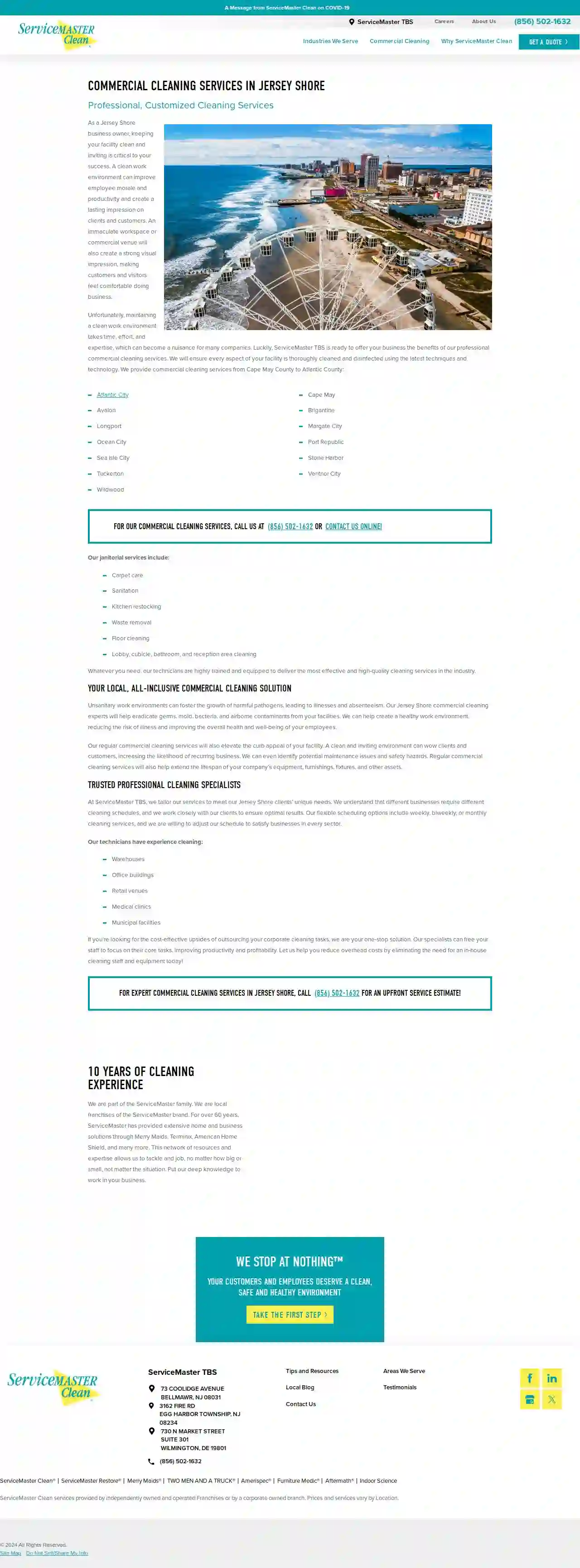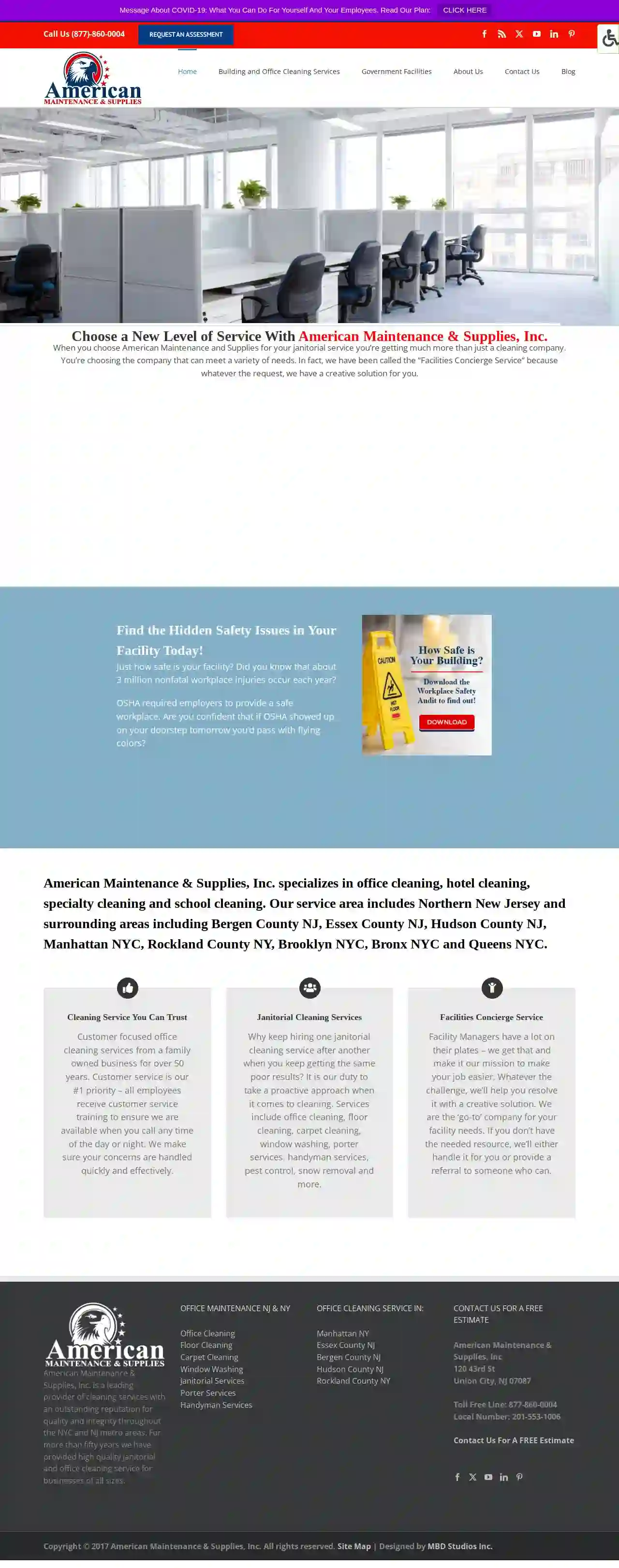Cleaning Services Medford Lakes
Find the best Cleaning in Medford Lakes
Get 3 FREE Cleaning quotes for your project today! Compare profiles, reviews, accreditations, portfolio, etc... and choose the best service.

JH22 Cleaning Services
516 reviewsJackson, USPremium Cleaning Services in Jackson Hole JH22, LLC is a professional property service company catering specifically to residential cleaning, commercial cleaning and various home improvement services. Our mission is simple; to provide top quality, eco-friendly & cost effective home services consistently. Long term business is what we strive for.
- Services
- Why Us?
- Testimonials
- Gallery
Get Quote
Cozy Cleaners LLC
52 reviews123 Main St, Fairfax, 22030, USAt Cozy Cleaners FW, we pride ourselves on providing top-notch cleaning services to our valued customers. With years of experience in the industry, our team of experts is dedicated to delivering exceptional results that exceed your expectations. From one-time deep cleans to regular maintenance services, we've got you covered. Our mission is to make your home sparkle and shine, while also providing a safe and healthy environment for you and your loved ones. We're fully insured and accredited, so you can trust us to get the job done right. Contact us today to schedule your appointment and experience the Cozy Cleaners difference!
- Services
- Why Us?
- Accreditations
- Our Team
- Testimonials
- Gallery
Get Quote
Office Pride Commercial Cleaning Services of Fort Wayne-Auburn
513 reviewsWayne, US- Services
- Why Us?
- Gallery
Get Quote
Maid Perfect
475 reviewsWayne, US- Services
- Why Us?
- Gallery
Get Quote
Schimmels Floor Care Solutions
535 reviewsWayne, US- Services
- Why Us?
- Gallery
Get Quote
The Cleaning Authority - Fort Wayne
4.962 reviewsWayne, US- Services
- Why Us?
- Gallery
Get Quote- SR
SR Fresh Cleaning
57 reviewsAtlantic City, US- Services
- Why Us?
Get Quote 
ServiceMaster TBS - Jersey Shore
51 reviewsAtlantic City, US- Services
- Why Us?
Get Quote- Bu
Bubbles 3 Laundromat
4.4179 reviewsJersey City, US- Services
- Why Us?
Get Quote 
American Maintenance & Supplies, Inc.
4.36 reviewsJersey City, US- Services
- Why Us?
Get Quote
Over 60,241+ Cleaning Services registered
Our janitorial pros operate in Medford Lakes & surrounding areas!
CleaningMatch has curated and vetted the Best Cleaning Contractors in Medford Lakes. Find a top & trustworthy business today.
Frequently Asked Questions About Cleaning Services
- Frees up your time: Cleaning can be time-consuming, especially for larger properties or busy individuals. Hiring a cleaning service allows you to focus on other priorities, such as work, family, or leisure activities.
- Ensures a deeper clean: Professional cleaners are trained in effective cleaning techniques and have access to specialized equipment, resulting in a more thorough clean than you might achieve on your own.
- Reduces allergens and improves hygiene: Thorough cleaning removes dust, allergens, and germs, creating a healthier living environment, particularly for those with allergies or sensitivities.
- Reduces stress and improves well-being: Coming home to a clean and tidy home can reduce stress and promote a sense of calm and order.
- Ventilation: Improve ventilation by opening windows, turning on the exhaust fan, and using a dehumidifier to reduce moisture levels.
- Bleach Solution: Mix one cup of bleach with one gallon of water. Wear gloves and eye protection when handling bleach. Apply the solution to the affected area, let it sit for 10-15 minutes, then scrub with a brush and rinse thoroughly.
- Vinegar Solution: For a milder alternative, mix equal parts water and vinegar. Apply to the moldy area, let it sit for an hour, then scrub and rinse.
- Baking Soda Paste: Make a paste of baking soda and water, apply to the moldy area, let it dry, then scrub and rinse. Baking soda helps remove stains and deodorize.
- Commercial Mold and Mildew Remover: Use a commercial mold and mildew remover according to the product instructions.
- Prepare the Windows: Remove dust and debris from windows using a brush, vacuum, or damp cloth.
- Cleaning Solution: Use a commercial glass cleaner or a homemade solution of equal parts water and vinegar.
- Spray and Wipe: Spray the cleaning solution onto the window, ensuring even coverage.
- Squeegee Technique: Use a squeegee to wipe the cleaner from top to bottom, overlapping each stroke by about an inch. Wipe the squeegee blade clean after each stroke.
- Dry Edges: Wipe the edges of the window with a clean, dry microfiber cloth to remove any remaining moisture.
Are cleaning services worth it?
If you value these benefits and find the cost justifiable, cleaning services can be a worthwhile investment in your time and well-being.
Do I need to provide cleaning supplies for the cleaning service?
If you have specific preferences for cleaning products, such as eco-friendly or hypoallergenic options, communicate those to the cleaning service. They may accommodate your requests or allow you to provide your preferred supplies.
How do I remove mold and mildew from my bathroom?
Always test any cleaning solution on a small, inconspicuous area first. After cleaning, take steps to prevent future mold growth by addressing moisture issues, such as fixing leaks and improving ventilation.
What is the best way to clean windows without streaks?
For best results, clean windows on a cloudy day or in the shade to prevent the cleaning solution from drying too quickly and leaving streaks.
Are cleaning services worth it?
- Frees up your time: Cleaning can be time-consuming, especially for larger properties or busy individuals. Hiring a cleaning service allows you to focus on other priorities, such as work, family, or leisure activities.
- Ensures a deeper clean: Professional cleaners are trained in effective cleaning techniques and have access to specialized equipment, resulting in a more thorough clean than you might achieve on your own.
- Reduces allergens and improves hygiene: Thorough cleaning removes dust, allergens, and germs, creating a healthier living environment, particularly for those with allergies or sensitivities.
- Reduces stress and improves well-being: Coming home to a clean and tidy home can reduce stress and promote a sense of calm and order.
If you value these benefits and find the cost justifiable, cleaning services can be a worthwhile investment in your time and well-being.
Do I need to provide cleaning supplies for the cleaning service?
If you have specific preferences for cleaning products, such as eco-friendly or hypoallergenic options, communicate those to the cleaning service. They may accommodate your requests or allow you to provide your preferred supplies.
How do I remove mold and mildew from my bathroom?
- Ventilation: Improve ventilation by opening windows, turning on the exhaust fan, and using a dehumidifier to reduce moisture levels.
- Bleach Solution: Mix one cup of bleach with one gallon of water. Wear gloves and eye protection when handling bleach. Apply the solution to the affected area, let it sit for 10-15 minutes, then scrub with a brush and rinse thoroughly.
- Vinegar Solution: For a milder alternative, mix equal parts water and vinegar. Apply to the moldy area, let it sit for an hour, then scrub and rinse.
- Baking Soda Paste: Make a paste of baking soda and water, apply to the moldy area, let it dry, then scrub and rinse. Baking soda helps remove stains and deodorize.
- Commercial Mold and Mildew Remover: Use a commercial mold and mildew remover according to the product instructions.
Always test any cleaning solution on a small, inconspicuous area first. After cleaning, take steps to prevent future mold growth by addressing moisture issues, such as fixing leaks and improving ventilation.
What is the best way to clean windows without streaks?
- Prepare the Windows: Remove dust and debris from windows using a brush, vacuum, or damp cloth.
- Cleaning Solution: Use a commercial glass cleaner or a homemade solution of equal parts water and vinegar.
- Spray and Wipe: Spray the cleaning solution onto the window, ensuring even coverage.
- Squeegee Technique: Use a squeegee to wipe the cleaner from top to bottom, overlapping each stroke by about an inch. Wipe the squeegee blade clean after each stroke.
- Dry Edges: Wipe the edges of the window with a clean, dry microfiber cloth to remove any remaining moisture.
For best results, clean windows on a cloudy day or in the shade to prevent the cleaning solution from drying too quickly and leaving streaks.